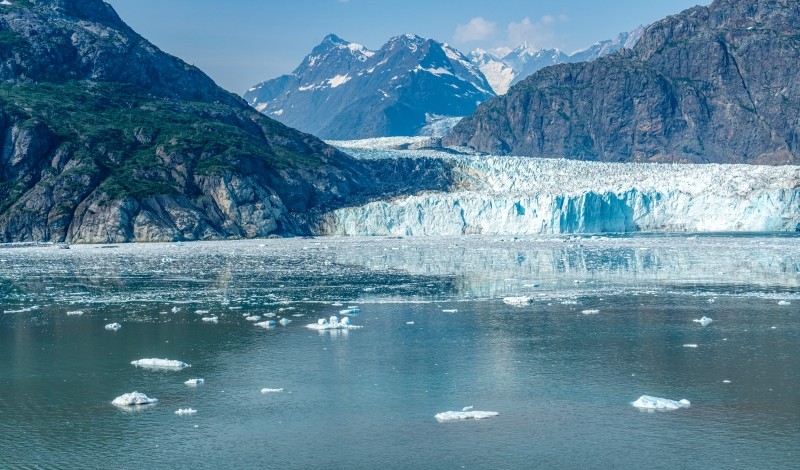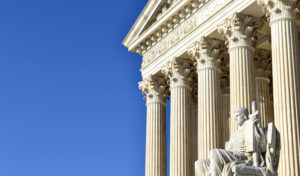
Scholars discuss the potential to regulate climate change with the UN Convention on the Law of the Sea.
Global average sea levels have risen eight to nine inches since 1880, and the annual rate of increase more than doubled between 2006 to 2015. Recent studies estimate that if nothing is done to reduce carbon emissions, then sea-level rise could threaten 300 million lives by 2050.
A related concern that scientists call “climate change’s evil twin” is ocean acidification. This process is caused by the ocean storing excess carbon dioxide from the atmosphere, which increases the acidity of the ocean and erodes the minerals that shellfish, crustaceans, and coral are made of. Ocean acidification can destroy fragile marine ecosystems, and it puts fishing industries at risk of failure.
Scholars and regulators are searching for ways to address climate change’s effects on the ocean before it is too late, and many are turning to the United Nations Convention on the Law of the Sea (UNCLOS)to do so.
Scholars commonly refer to UNCLOS as the “constitution for the ocean,” as it governs all of the resources and uses of the oceans. Although UNCLOS does not explicitly mention climate change, there are many aspects that can be taken together to regulate climate change through its interactions with the ocean.
Scholars argue that the most relevant section is Part XII—Preservation of the Marine Environment. Part XII states that nations are obligated to protect and preserve the marine environment, which includes rare or fragile ecosystems and habitats for threatened or endangered species. Part XII also includes general measures to reduce oceanic pollution from various sources.
Part XII has not yet been used to effectively regulate climate change, however, because its definition of pollution does not explicitly include greenhouse gas emissions. Even if Part XII did mention greenhouse gas emissions, scholars further debate whether an effective obligation could be imposed on a state through the UNCLOS independent judicial body, the International Tribunal on the Law of the Sea (ITLOS).
Part XIII of UNCLOS provides an in-depth legal regime that governs and supports continued research into marine biodiversity and ecosystem health. Although this part cannot be used to prevent or reduce climate change, it has sanctioned research and international cooperation that otherwise would be much more difficult to orchestrate. Furthermore, the UN General Assembly recently recognized the need for more research specifically relating to greenhouse gas emission effects on the ocean to provide a basis for more regulations.
This week’s Saturday Seminar examines scholars’ suggestions on how UNCLOS could be used to regulate sea level rise and where it may fall short.
- State parties to UNCLOS may have a legal obligation to contribute to a fund that compensates countries for environmental harms caused by climate change, argues Rachel Wam in an article in the UCLA Journal of Environmental Law and Policy. Wam explains that under the current regime, states can voluntarily contribute to this fund, but are not required to do so. Wam proposes that UNCLOS be interpreted to include climate change as a form of marine pollution. If this proposal is implemented, Wam contends, state parties to UNCLOS would be liable for actions that exacerbate climate change. Courts could order liable states to contribute to the fund, Wam argues.
- In a National Maritime Foundation article, Sunil Kumar Agarwal of India’s Chanakya Forum and Kamlesh Agnihotri of India’s National Maritime Foundation argue that Part XII of UNCLOS actually can regulate greenhouse gas emissions. Agarwal and Agnihotri contend that the Part XII phrase “protection and preservation of the marine environment” is relevant to addressing climate change. It is important to use UNCLOS to enact climate change mitigation strategies because other existing measures remain insufficient, Agarwal and Agnihotri argue. To further expand the authority of the UN to address issues including sea-level rise, the UN Secretary General should refer the matter to the state parties to the UNCLOS, Agarwal and Agnihotri conclude.
In an article in the Journal of Island and Marine Studies, Yuncheng Deng of China’s Ministry of Natural Resources and several coauthors discuss the recent advisory opinion from ITLOS. Deng and his coauthors note that many small island nations banded together to request ITLOS to weigh in on what UNCLOS requires of member states. The Deng team explains that ITLOS declared that human-produced carbon dioxide is a pollutant and that UNCLOS could require states to use the best available science, international rules and standards, or available means and capabilities as standards to regulate carbon dioxide. Deng and his coauthors contend that although the ITLOS opinion is not legally binding, it opens the door to future action and official regulations. - In a Journal of Environmental Law article analyzing recent scholarship on changing coastlines and the law, Mara R. Wendebourg of England’s Dickson Poon School of Law argues that the ambulatory thesis is incorrect, and UNCLOS does not regulate sea levels. Both Articles 7(2) and 76(9) of UNCLOS permanently fix the sea’s baselines and outer boundaries of the continental shelf, Wendebourg contends. The question, Wendebourg argues, becomes whether under UNCLOS, baselines are automatically adjusted when coastal changes occur, or whether coastal states must redraw the baselines to reflect such changes. Wendebourg concludes that there is no legal obligation for nations to regularly update baselines due to changing sea levels.
- In an Ocean Development and International Law article, Lan Ngoc Nguyen of Netherland’s Utrecht University School of Law argues that UNCLOS does not currently regulate climate change, but could through the “rule of reference.” Nguyen explains that the rule of reference is a mechanism in UNCLOS that allows rules and standards from other international treaties to be incorporated into UNCLOS. Nguyen notes that a rule or standard must rise to the level of being “global” for the rule of reference to apply. She notes, however, that this standard is not well defined in international law. Nguyen contends that depending on the interpretation of global, there are several international standards that could be adopted into UNCLOS to regulate greenhouse gases.
- As the international community prepares to negotiate a treaty regulating the production, consumption, and disposal of plastics, Elizabeth Mendenhall of the University of Rhode Island proposes using UNCLOS as a foundation for a future treaty in an article in Cambridge Prisms: Plastics. Mendenhall explains that although the need for international regulation of plastics pollution is widely recognized, conservative political trends in several countries, geopolitical competition, and the fossil fuel industry undermine efforts to reach international consensus. UNCLOS is currently the only international effort to prevent marine plastic debris, Mendenhall observes. Mendenhall thus argues that a future plastics treaty should be framed as a means of supporting the implementation of the requirements set out in UNCLOS.
The Saturday Seminar is a weekly feature that aims to put into written form the kind of content that would be conveyed in a live seminar involving regulatory experts. Each week, The Regulatory Review publishes a brief overview of a selected regulatory topic and then distills recent research and scholarly writing on that topic.



